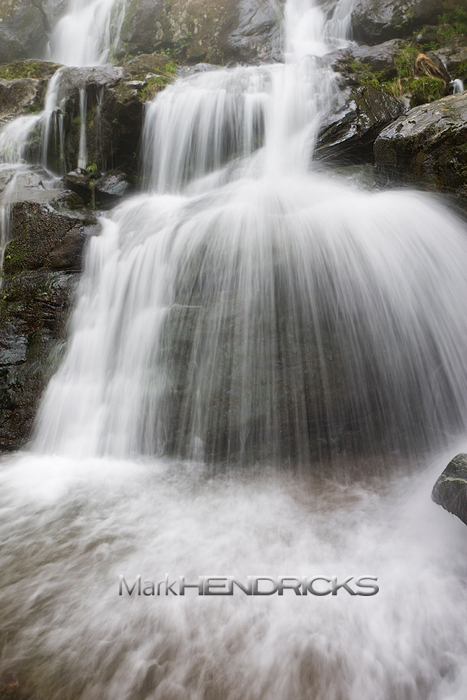Old Man Winter sure is showing off his biceps this year! Between the Polar Vortex bringing the coldest temperatures felt in decades to some parts of the country and the constant onslaught of snow and ice, some of the local wildlife is doing whatever it can to stay warm. Some visitors, however, are thriving in this cold.
Snowy Owls (Bubo scandiacus) have taken up residence throughout the Mid-Atlantic much to the ecstasy of wildlife enthusiasts, birders, photographers, and fans of the actor Daniel Radcliffe.
I mean Harry Potter. I digress; let’s get back to Hedwig……
Snowy Owl Merrill Creek Reservoir December 2011
This may be the biggest irruption of the majestic species to ever hit the lower 48, with one owl seen as far south as Jacksonville, Florida. This is not the first time a Snowy Owl has been seen in North Florida, nor is it the first irruption to ever hit the United States, but the magnitude of the size of this irruption is amazing. It has been particularly exceptional in the eastern and Mid-Atlantic region where a new Snowy Owl is being reported almost everyday in terrain ranging from farmland to downtown city rooftops. Never before has the Mid-Atlantic hosted this many of the regal species.
“Hold on there, Hendricks. Didn’t I read something about Snowy Owls wintering here a few years ago?”
Yes, dear reader, that is correct. The winter of 2011-2012 also brought an irruption of Snowy Owls which spread across most of the United States. However while at that time it reached as far south as Oklahoma, it was not as apparent in the Mid-Atlantic. Nevertheless I thought that irruption was one for the record books, until November of 2013 when the owls were spotted all over Maryland, Delaware, Virginia, and New England. They were even seen along the shores of the North Carolina, Georgia, and, wait for it, Bermuda!
My first wild Snowy Owl experience came in early December, 2011 as I left my home at 12:30 AM to make the trek to the Merrill Creek Reservoir located in Harmony Township, New Jersey. I received a report of a Snowy Owl who took up residence at the creek and naïvely thought I should make the journey and attempt to see the bird. I had never visited this area before and I remember asking a hunter at five in the morning if he had seen the bird and some joggers an hour and a half later. None of them knew there was a Snowy Owl at their doorstep! As I circled around the reservoir I eventually came across a father and son, cameras and tripod setup, viewing the owl. “These are my people,” I thought to myself and they were kind enough to allow me to spend the rest of the morning with them. We had a pretty fun time and were able to watch the owl for quite awhile. What was more important about that day is that the father, Tom, became a very good friend of mine. He wrote about that day on his excellent blog here.
So what makes a top predator of the Arctic seek wintering grounds far out of its normal range? Snowy Owls, while opportunistic predators, primarily feed on Lemmings, a species they are cyclically linked to. When Lemming populations are abundant, Snowy Owls will lay more eggs and have greater levels of chick survival. This high level of fecundity will eventually drive the younger owls to feeding grounds much farther away when the Lemming population becomes scarce. More owls and less food correlates with an irruption.
A few days ago I walked for miles amongst sand dunes on a cold, windy day in hopes of locating a Snowy Owl. I am purposely avoiding “Hot Spot” locations posted on the internet because of so many instances involving photographers and amateur wildlife enthusiasts flushing birds due to venturing too close. Everyone wants to see these owls! I think it is fantastic because it hopefully will be the catalyst for more people to enjoy and appreciate wildlife. With that though, comes proper viewing etiquette. Too often people will think of wild animals with a theme park/zoological facility mindset, which is very detrimental to a wild animal. Snowy Owls are very sensitive and come from areas where few humans reside. Always respect the wild of the animal and of the land.
As I hiked amongst the dunes and continuously scanned the area my heart rate quadrupled as I came across a Snowy Owl sitting on top of a dune about six feet in front of me! How I did not see it prior to this is a testament to the elusive nature of the species. I slowly backed away and lowered to my side on the sand and slid backwards. I was far too close and did not want to scare this bird. I then laid in the sand for about 15 minutes to allow the bird to become acclimated to my presence and see I was not a threat. The strong wind muted any sound I made from setting up my gear and as I came to one knee to compose the first shot the bird flew over to the fence around the dune to check me out. What an inquisitive Snowy Owl! She continued to watch me for a few moments until she flew back further from where she was before and I saw she had a meal. Unfortunately her back was turned to me and I couldn’t see too well of what she was consuming. I watched for a few minutes until she flew back to the fence to watch me again! She allowed me to fire off image after image. It began to get darker and I decided it was time to leave. I still had a long way to go back as I was not camping and she flew forward to another part of the fence to watch me off. I fired off another image under the setting sun and she flew back to her meal.
Having the cold wind and sand engulf me was not the most enjoyable experience in the world but sitting patiently for that time, I believe, allowed the owl to become comfortable with my presence. Every grain of sand that smacked me in the face was worth the experience of photographing this amazing creature.
Are you hoping to come across a Snowy Owl? If so make sure to scan open fields as these areas are most similar to the tundra where they nest. Farmland, sand dunes, and airports seem to be particularly popular with this irruption. Also scan fences and light poles that surround these areas as they are likely to perch on them. Most importantly be patient and keep your distance. If you do not stress the owl you may be rewarded by witnessing it exhibit a wide array of behavior.
It is very rare to have an irruption of this level and to have two separated by one year is unheard of. The historic implications of this arctic mass exodus may shed some information about the overall health of this precarious ecosystem which is rapidly changing as the climate warms. Maybe the presence of this incredible, resilient, animal will inspire people to think more proactively of how they use their natural resources and how they too can help protect the land. Maybe I am just being an eternal optimist. Regardless, I hope.
As always feel free to contact me here.
Snowy Owl January 2014. Under a Blood Orange Sky.



















